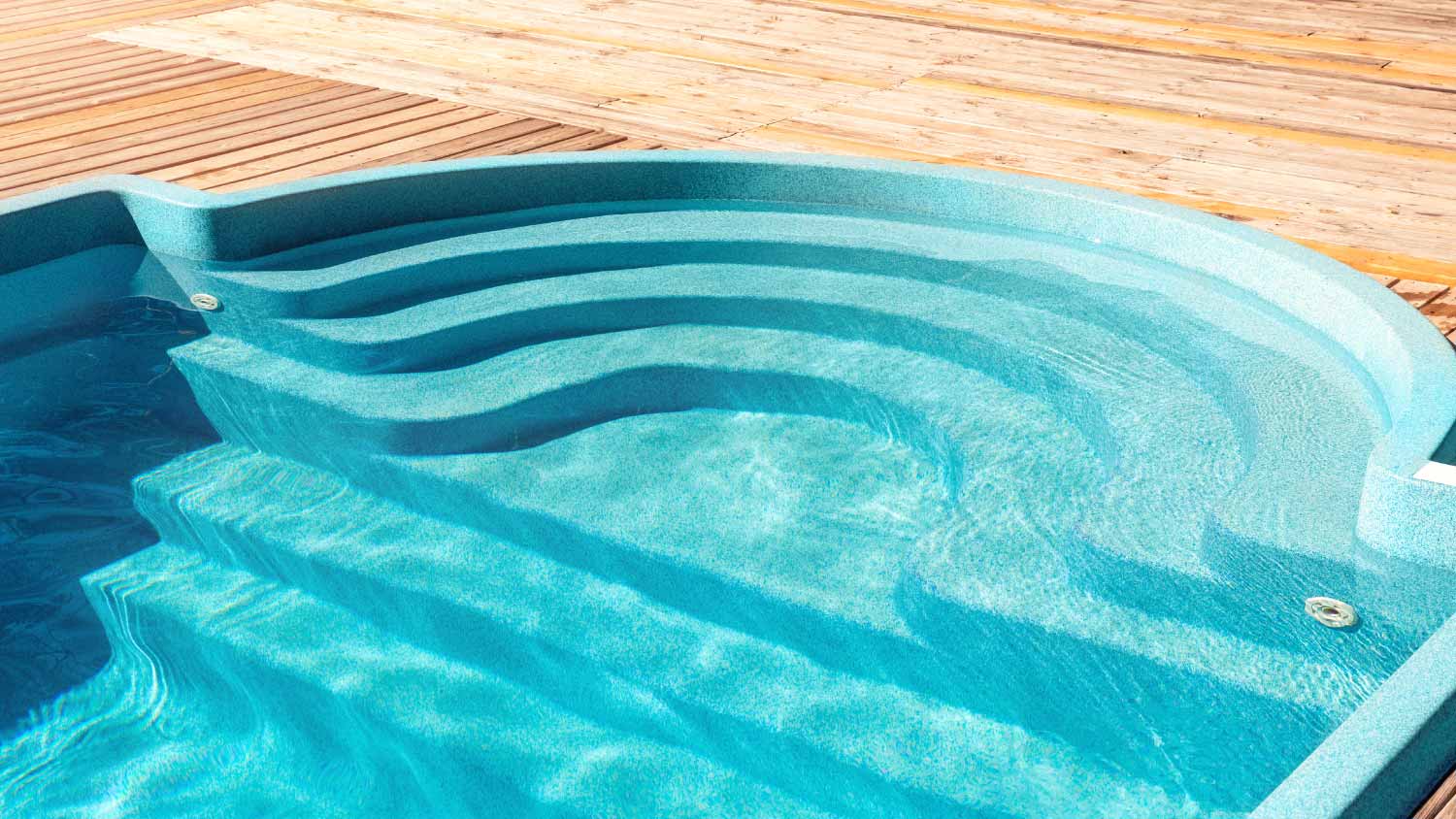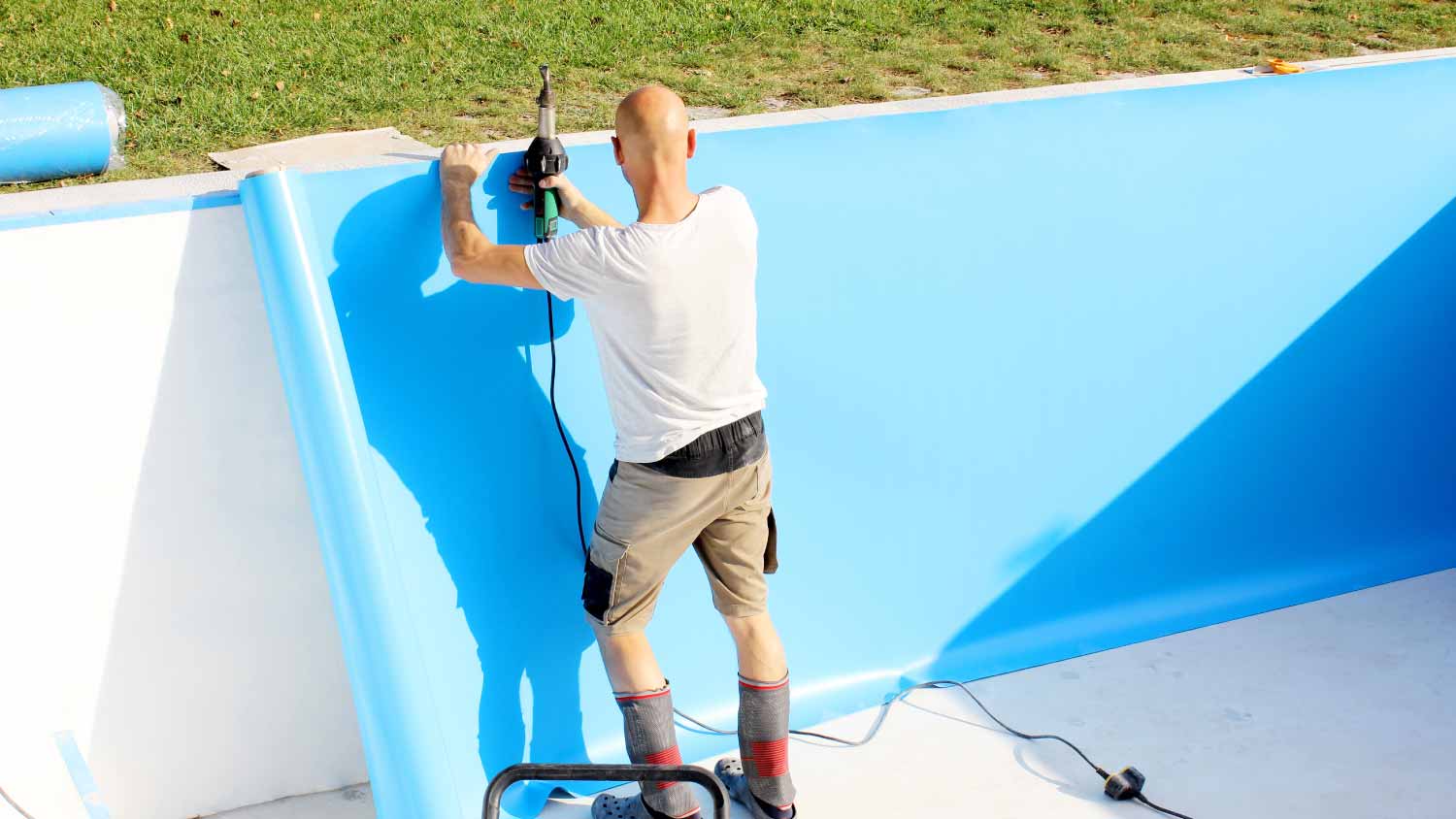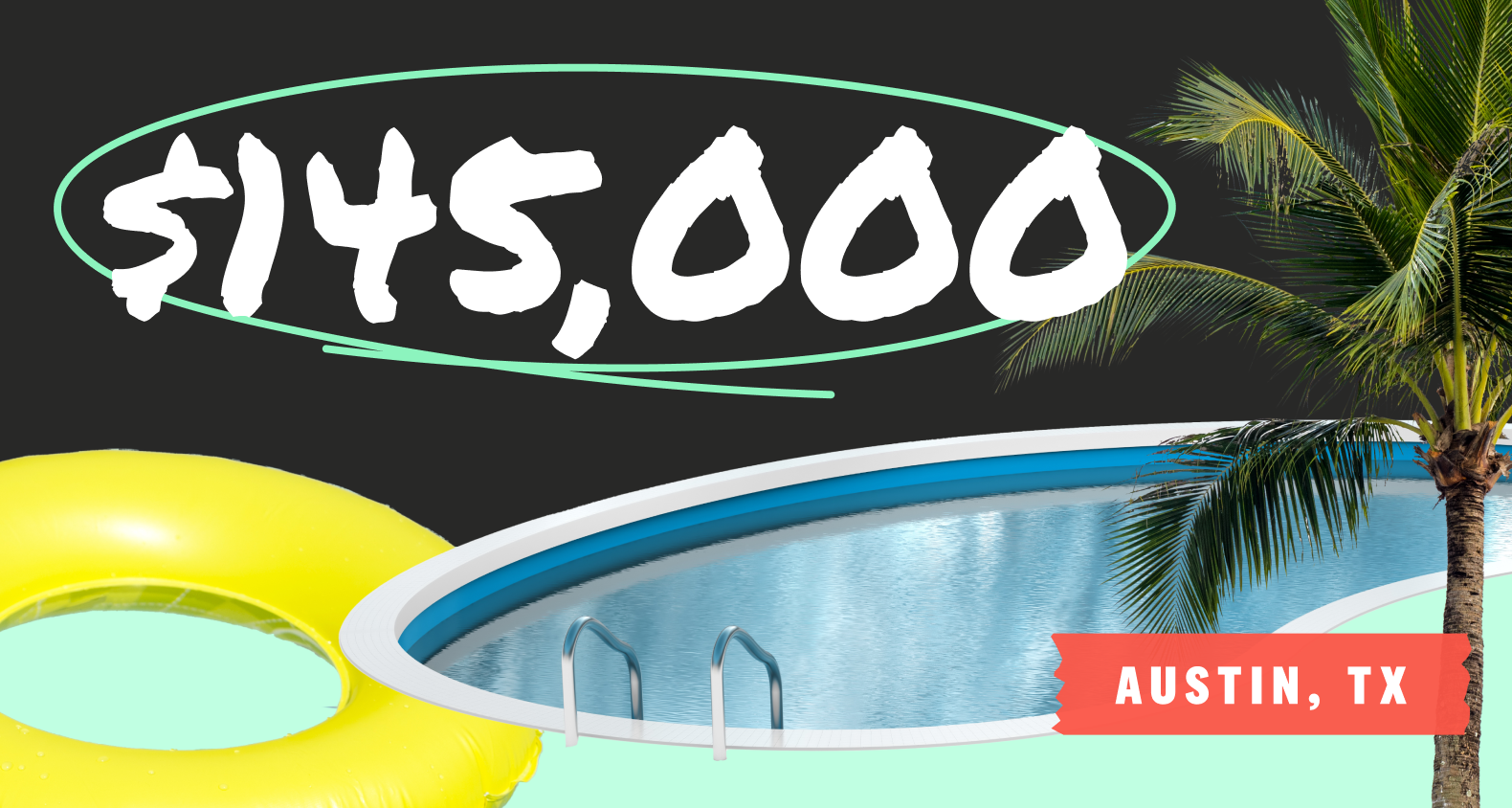Fiberglass vs. Vinyl Pools: What’s the Difference?
Dive into the durability debate


Fiberglass pools are pre-molded and have a smooth, hardy finish.
Vinyl pools have a flexible vinyl liner that needs periodic replacement.
Fiberglass pools arrive ready to install and require very little maintenance.
Vinyl pools are less expensive upfront, but costs more over time.
Your choice of pool depends on what you value most—cost, customization, or care.
Dreaming of a backyard pool but stuck between a fiberglass versus vinyl pool? You’re not alone—choosing the right pool is a difficult decision. One is sleek, low-maintenance, and built to last, while the other is less costly upfront and highly customizable. Here, we wring out the pros, cons, and hidden costs so you can float on with the best choice for your home.
Fiberglass vs. Vinyl Pools: Key Differences
Both options offer unique benefits, so you’ll have to weigh your priorities—whether that’s customization, durability, maintenance, or cost. Fiberglass pools are known for their smooth, durable surfaces and low-maintenance needs, while vinyl liner pools provide greater flexibility in design and a lower initial price. Let’s take a dip in the details to help you decide.
What Is a Fiberglass Pool?

A fiberglass pool is a pre-molded shell made of fiberglass-reinforced plastic covered by a smooth gelcoat finish. It arrives at your home ready for your local pool installation pro to place it into an excavated hole. This makes installation faster than other pool types. Fiberglass pools come in various shapes and sizes that are limited to pre-designed molds.
| Pros | Cons |
|---|---|
| Low-maintenance surface | Higher upfront cost than vinyl pools |
| Smooth, algae-resistant finish | Limited customization and sizing |
| Fast installation | Maximum width restricted by transport limits |
| Long lifespan | Gelcoat repairs can be tricky |
Best for:
Homeowners who want a low-maintenance pool.
Those looking for long-term durability.
Pool owners who want faster installation.
People who want a smoother pool surface for comfort and safety.
Pros of Fiberglass Pools
Fiberglass pools have a gelcoat surface that is non-porous, meaning it won't harbor algae like concrete or vinyl pools will. This reduces the need for scrubbing and cleaning, and it helps keep chemical costs lower. Pool contractors can also install fiberglass pools in an average of four to six weeks, since they arrive pre-made. This minimizes backyard disruption compared to vinyl liners or concrete pools.
With proper care, a fiberglass pool can last for decades without needing resurfacing. While you must replace vinyl liners regularly, fiberglass pools retain their integrity for the long haul.
Cons of Fiberglass Pools
The average cost of a fiberglass pool is between $25,000 and $60,000, which is higher than vinyl liner pools. However, their lower pool maintenance costs help offset this over time. But that cost won’t get you a custom pool—since fiberglass pools are pre-molded, you’ll have to choose among available sizes and designs. If you want a highly customized pool shape, a vinyl liner pool or concrete pool may be a better fit.
What Is a Vinyl Pool?

Vinyl liner pools have a flexible liner that’s secured over a steel, polymer, or concrete structure. They offer more shape and size customizations than fiberglass pools but require periodic liner replacements.
| Pros | Cons |
|---|---|
| Lower initial cost | Vinyl liners need replacement every 5 to 10 years |
| Customizable size and shape | Prone to punctures and tears |
| Smooth, non-abrasive surface | Lower resale value than fiberglass pools |
| Less algae buildup than concrete pools | Long-term costs can add up |
Best for:
Homeowners with smaller budgets for new pools.
Those who want a fully customized pool shape or size.
People who don’t mind needing an occasional pool liner replacement.
DIYers willing to handle some pool maintenance themselves.
Pros of Vinyl Pools
Vinyl pool costs start around $20,000 to $40,000, making them a more budget-friendly option compared to fiberglass or concrete pools. They’re also much more customizable, so your pool company can design them to fit nearly any size, shape, or depth. The vinyl liner also provides a soft, non-abrasive finish that can be more comfortable for swimmers.
Cons of Vinyl Pools
You have to replace pool liners every 5 to 10 years, and each liner replacement costs an average of $1,200 and $3,800. Over the lifetime of the pool, this expense can add up and cancel out upfront savings. Sharp objects, pet nails, and even some pool toys or activities can puncture the liner. This can lead to repairs or replacement sooner than expected.
Fiberglass Pools vs. Vinyl Pools
In a head-to-head splash-off, see which type of pool takes the gold medal.
Appearance: Tie
Both types of pools offer visually appealing finishes, but they achieve their looks in different ways.
Fiberglass pools have a seamless, polished finish from a built-in gelcoat that resists staining and fading. They come in a variety of color options for design flexibility. Vinyl liner pools have more decorative liner patterns, including tile and stone-like finishes, which give them a custom look. However, they can wrinkle over time, affecting their appearance.
Options and Customizations: Vinyl Pools
Vinyl liner pools offer nearly unlimited customizations in shape, size, and depth. Whether you want a freeform pool design, an extra-deep deep end, or a pool that perfectly fits your backyard layout, vinyl can accommodate your vision. Fiberglass pools, while available in many styles, are pre-manufactured and limited to available molds.
Durability: Fiberglass Pools
Fiberglass pools have a solid, non-porous structure that can last for decades with minimal upkeep. The gelcoat finish resists staining, cracking, and algae growth, keeping the pool in great shape. Vinyl pool liners are only 20 to 30 millimeters thick and vulnerable to wear, tears, and punctures. You’ll likely need to replace vinyl liners every five to 10 years.
Price: Tie
Vinyl pools cost less upfront, at an average of $20,000 to $40,000, but as vinyl liners need replacing every five to 10 years at an average cost of around $3,000, the long-term costs add up. Conversely, fiberglass pools are more expensive to buy at an average of $25,000 to $60,000, but they have much lower maintenance costs over their lifetimes. You’ll have to decide whether a lower initial cost is more valuable to you than long-term savings.
Ease of Installation: Fiberglass Pools
Fiberglass pools come pre-molded and ready to place into your pre-dug hole, so they’re far easier to install. While installing a pool is almost never an advisable DIY job, the ease of installation for your pool contractor can speed along the job so you can be swimming faster in your fiberglass pool than in a vinyl pool.
Ease of Repair: Vinyl Pools
Vinyl pools are easier to repair than fiberglass pools, and they can be more affordable to repair, too. You can often patch small punctures or tears, and while full liner replacement is more costly, it’s a straightforward process. Fiberglass pools are more durable overall, but they require professional repair for cracked or chipped gelcoat. It can be challenging to match the color and texture of the original surface, too, which can add to the cost and leave visible repair marks.
Maintenance: Fiberglass Pools
Homeowners love fiberglass pools because they have such low maintenance requirements. Their gelcoat surface prevents algae from clinging, so you or your local pool service company will have less cleaning and chemical adding to do. The non-porous surface also keeps pool pH levels stable, which limits chemical adjustments. In contrast, vinyl pool liners have seams that can be breeding grounds for algae, and they’re more susceptible to damage.
Length of Life: Fiberglass Pools
Fiberglass pools are more sturdy and built to last without major maintenance needs, so they have a longer lifespan than vinyl pools. In fact, most fiberglass pools will last 30 years or more with minimal maintenance. While vinyl pools can also last a long time, they need regular liner replacements every five to 10 years, depending on how much you use your pool, the quality of the liner, and how well you care for it.
Eco-Friendliness: Fiberglass Pools
While pools aren’t considered eco-friendly due to their high water use, fiberglass pools are the more sustainable option because of how long they last, low maintenance needs, and reduced chemical and energy use. They can go decades between resurfacing, while vinyl pools need a new liner every few years, leading to more waste over time. The smooth, non-porous surface resists algae growth and doesn’t require as many chemicals as vinyl pools. They also retain water heat better than vinyl for lower heating costs, and they don’t require draining for maintenance, meaning less water use overall.
Resale Value: Fiberglass Pools
If you plan to sell your home, a fiberglass pool is a better investment. Since fiberglass pools last longer and require less maintenance than vinyl pools, they are often more appealing to potential buyers. In contrast, vinyl liner pools come with concerns about liner age and replacement costs, which can be a negotiating point. So fiberglass pools are a bigger win in terms of pool ROI.





- Swimming Pool Installation
- Pool Liner Replace & Install Companies
- Above Ground Pool Contractors
- Pool Remodeling Companies
- Inground Pool Companies
- Pool Removal Companies
- Inground Pool Repair Companies
- Sauna Companies
- Hot Tub Companies
- Sauna Repair
- Fiberglass Pools
- Pool Designers
- Pool Pump Repair
- Pool Closing Services
- Solar Pool Heater Installers










